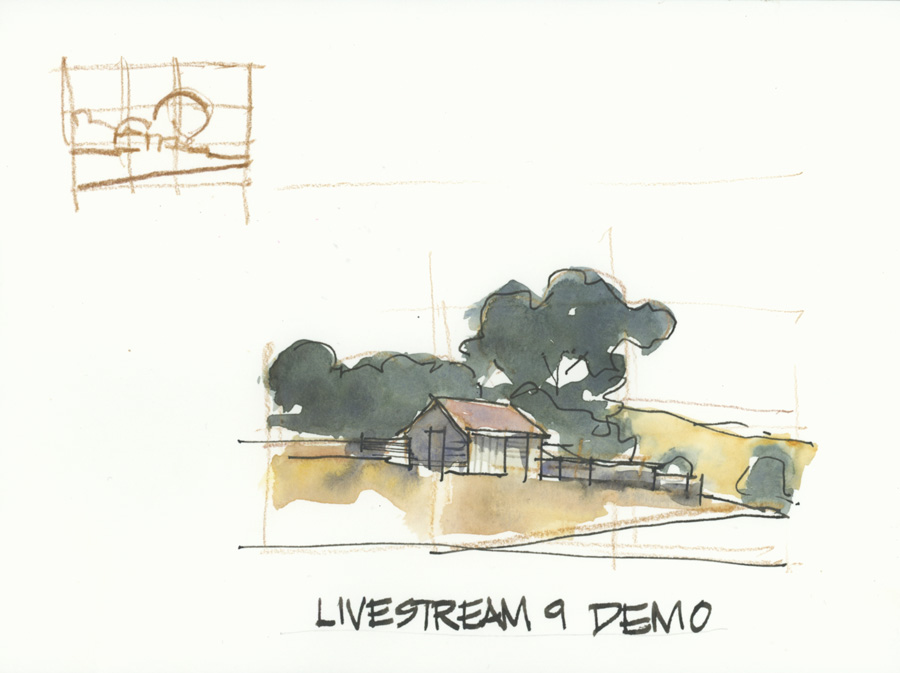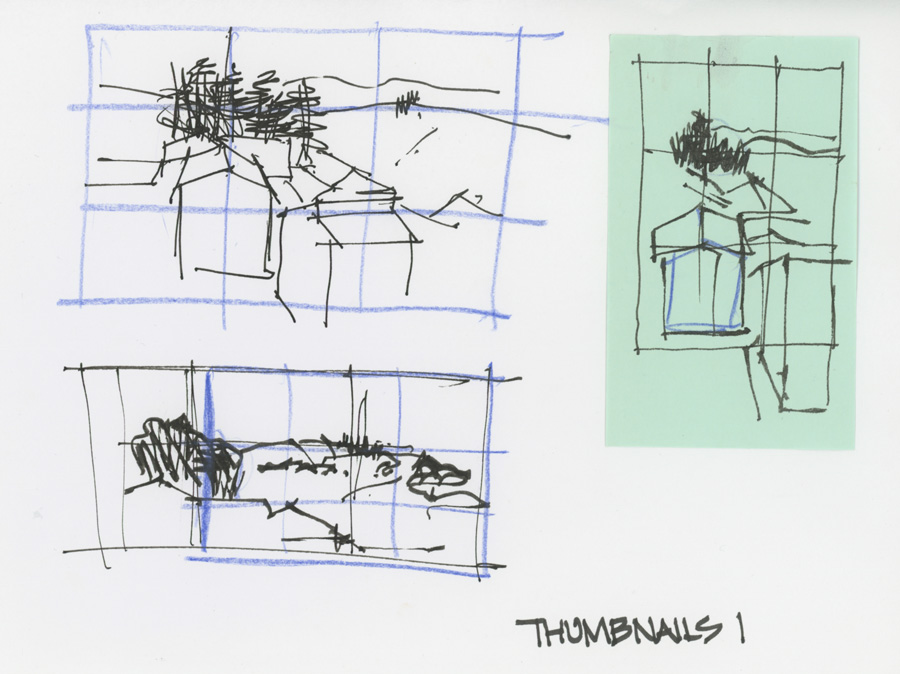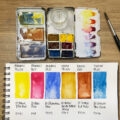Last night we finished up a truly amazing Live Version of my Foundations course. For the last 3 months I’ve been hosting weekly live teaching sessions to accompany the Foundations lessons where I recapped on the concepts from the current lesson, reviewed work from the classroom and did additional demos. For the ‘grand finale’ last night I went through approximately 20 different photos (‘hard scenes’ as suggested by members of the group) and explained how to use Foundations concepts to sketch them. (More about this later!)
As always an incredibly supportive, inspiring and motivating group formed and it was such a joy to visit the classroom each week and see all the great work and commenting happening there. It’s been wonderful to see people’s work significantly improve as they work through the Foundations lessons. So a huge thankyou (and a big hug) to all the people who have made the last 12 weeks so special for me!
At the end of the course I ask everyone to think about three big takeaways… and mine this time came from the first three lessons. They are:
- I really enjoyed using my limited palette of 6 colours (my Foundations palette) in my everyday kit
- It was great to remind myself, once again, of the importance of seeing the world as a series of edges and in particular, I’ve been focusing on improving my ability to see the angles of edges more accurately.
- Similarly, it’s been good to focus on shapes – merging shapes, negative shapes and mapping light and dark.
The last article I wrote about Foundations was way back in Lesson 7 (with the appearance of Borromini Bear), so here is a summary of the last few weeks.

Lesson 8: Balancing Line and Colour
In this lesson we were looking at how to decide what to draw in ink and when to start painting. It’s such a big topic, that I’ve explored this theme in more detail inside my Edges course.
For the additional demo during the livestream for this week, I talked about trees and showed how, at the moment, I like to combine ink, watercolour and watercolour pencil.
Lesson 9: Composing the view
Moving on to the part of the course focusing more specifically on the essentials of urban sketching, we looked at how to frame and then set out the view using a viewfinder and the rule of thirds. This simple sketch done during the livestream was of a typical Australian rural scene. Note: All of the sketches in this article were done in 5-10 minutes (less all the talking and answering questions from the chat!)
Lesson 10: Creating a focus
In the next lesson, we looked at how to create a focus (tell a story) in our sketches and used thumbnails as a way to explore this. It’s always amazing to me how many different compositions can be found in some views. This image is the first page of thumbnails of a view from Montone in Italy that I did during Livestream 10. The green paper is a large-sized Post-It note which is the perfect size for doing thumbnails!

Then I did another page of thumbnails exploring some ideas suggested by the group in the chat.

And finally I did a quick watercolour sketch of the vertical composition. Even though this is a simple sketch (on Alpha paper) it has some lovely watercolour washes.

Lesson 11: Working from a focus
This lesson contains lots of tips for working in a non-traditional way, starting with the focus of our sketch and working outwards – my favourite way of working. This lesson ties in with Lesson 4 of Sketchbook Design and also Lesson 4 of Watercolour On Location where I explain ‘Designing on the Fly’.
Another quick sketch using some simple shapes was done during the weekly live session to explain this way of working. This image is of Furnace Park in Lithgow.
Lesson 12: Reviewing your work
In the final lesson, we discussed ways of becoming your own teacher and I typically do a number of reviews of work from the classroom. As I’ve been doing that on a weekly basis during the livestreams, I did something different for the last session. As mentioned above, I explained how to use Foundations concepts for a number of complex scenes (photos were suggested by members of the group) – it was so much fun!
Below are a few examples.

Three thumbnails exploring different stories within a street view from Oxford.

Inside the Louvre – an interior scene where I started with the shadow shapes and really beautiful watercolour magic! (More about how to achieve this inside my Watercolour course.)

An abstract colour exploration of a winter garden. The idea behind this page is to test out different watercolour washes for a scene without actually sketching it first – so it’s a series of colour swatches that roughly correspond to the scene. I want to do this type of painting more often!

There were a number of very complex buildings in the collection of photos – this was my favourite. Even though this Victorian mansion was highly decorative the overall shapes/volumes are really fairly simple. (More about this inside my Buildings course)

In order to sketch really complex scenes, it’s important to be real grounding in seeing edges (lengths, angles and relationships) and shapes (particularly shadow shapes). These thumbnails demonstrated this.

I had fun with this one testing out a paint-first technique for this iconic bridge in Florence… and in particular for the water.

A few studies for a night scene. Hmmm, why haven’t I done more of these over the years? Something that I will definitely explore more when we go through Watercolour On Location later in the year.
These are just a few of the scenes I discussed last night and it was a great way to wrap-up Foundations.
BTW If you have signed up for Foundations at any time you can access the replays of all these livestreams inside the Foundations classroom. They are generally found in Part 13 of each lesson.
Foundations is available now for anyone to work through at their own pace. So if you are interested in building a solid foundation for your sketching (both at home and out on location) please check out more about the course here.
And finally…Thanks again to everyone who was part of this Live Version of Foundations! I’m definitely going to miss our weekly live sessions but hope to still see your work inside the SketchingNow classrooms.












2 Comments
Hi Liz, when is your next Live Version of Foundations? Thanks
Hi Bren, I normally only do a Live Version for a particular course every 2 years – I don’t have a date for Foundations but it is the course that I go through the most.Foundations is available to go through at your own pace at any time.
NEWSLETTER
Subscribe for first notification of workshop + online classes and more.